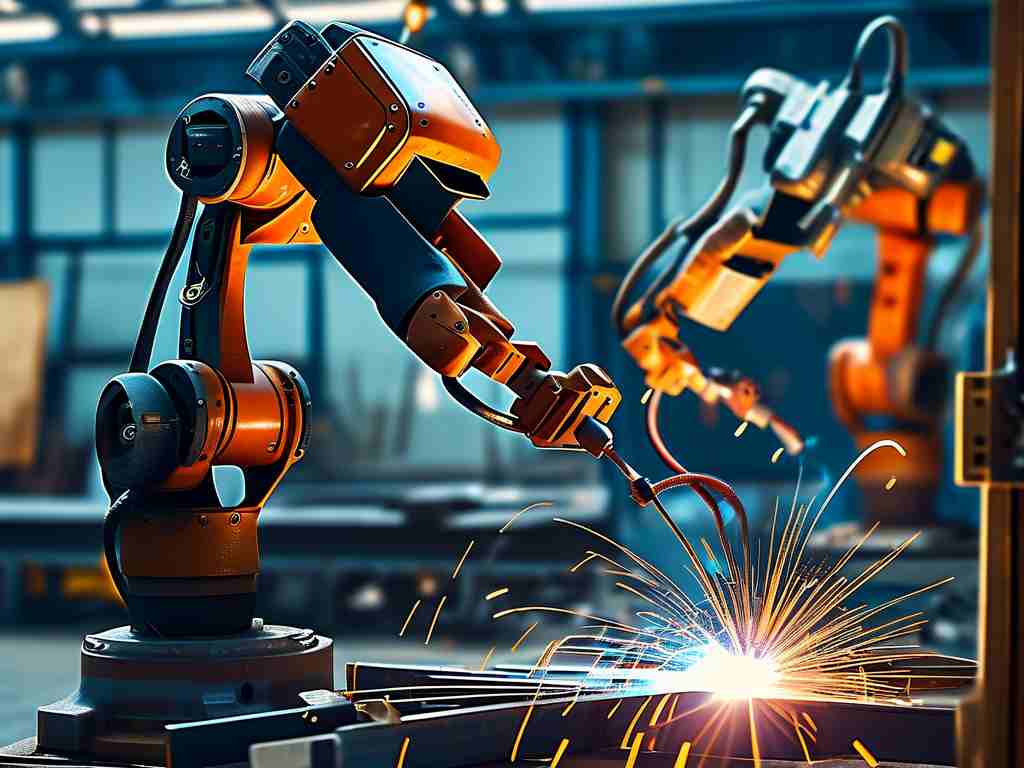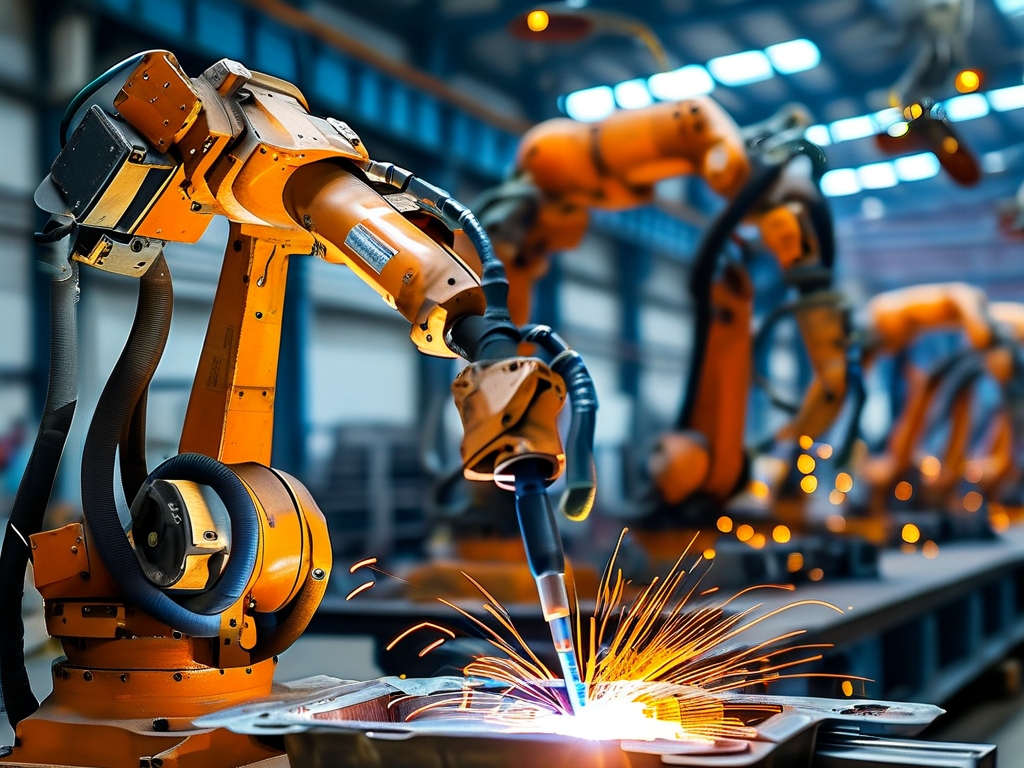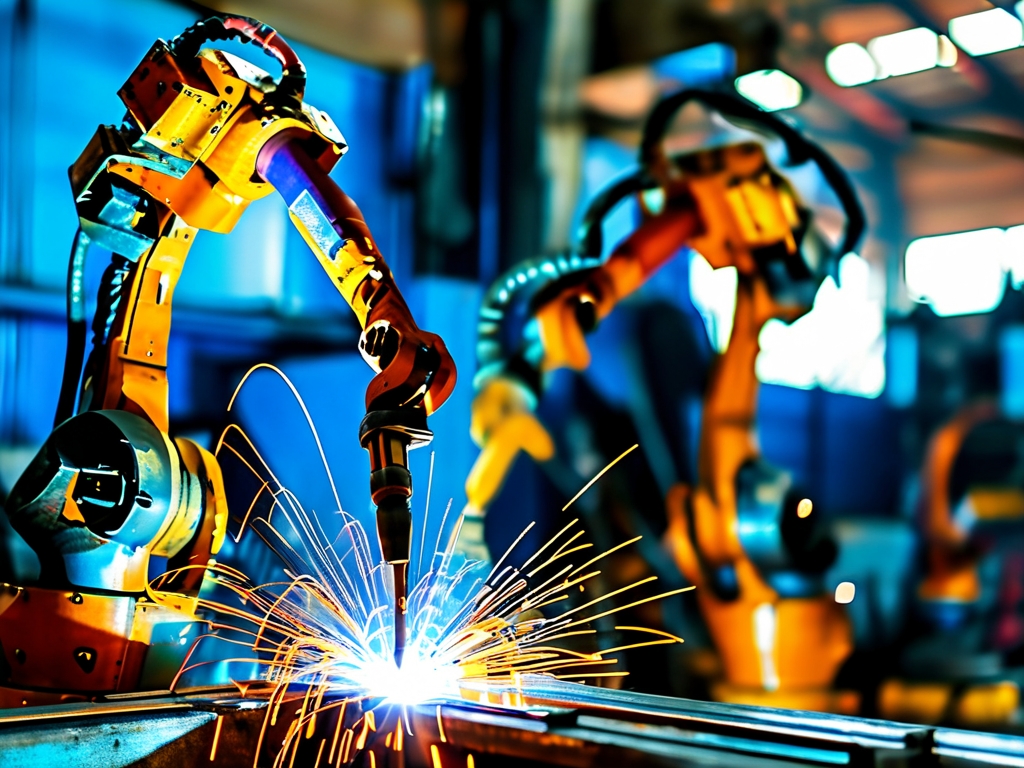In the heart of modern industrial production, a silent revolution is reshaping metal fabrication. Robotic welding systems, armed with cutting-edge algorithms and sensory networks, are achieving weld perfection at speeds human operators could only imagine. This technological leap isn't just about replacing manual labor—it's rewriting the rules of structural integrity and manufacturing efficiency.

At the core of these advanced systems lies multi-axis articulation technology. Unlike conventional welding robots limited to predefined paths, next-gen models like the Yaskawa Motoman MA1440 employ 360-degree rotational wrists combined with laser-guided trajectory correction. This allows seamless welding of complex curved surfaces found in aerospace components and automotive subframes, maintaining 0.02mm positional accuracy even at 2.3m/s movement speeds.
The real game-changer emerges in adaptive heat management. Through hyperspectral imaging and real-time thermal modeling, these robotic welders dynamically adjust current output and travel speed. During recent trials at a Shanghai shipyard, such systems demonstrated 40% reduction in thermal distortion while welding 50mm-thick steel plates—a critical advancement for offshore platform construction where millimeter-level deformation can compromise structural safety.
Material versatility presents another frontier. Modern robotic welding cells now handle exotic alloys previously deemed unweldable. The FANUC Arc Mate 120iC, for instance, integrates pulsed gas metal arc welding (GMAW-P) with argon-helium gas mixtures to successfully join titanium-aluminum composites used in next-gen aviation turbines. This breakthrough eliminates the need for explosive riveting in airframe assembly, reducing aircraft weight by 15% while enhancing fatigue resistance.
Quality assurance has undergone parallel transformation. Embedded phased-array ultrasonic testing (PAUT) modules now perform micron-level flaw detection mid-weld. At BMW's Leipzig plant, this in-process monitoring system reduced post-weld inspection time by 78% while catching 99.6% of defects—compared to traditional manual sampling's 85% detection rate. The robots' machine learning algorithms even predict electrode degradation patterns, automatically adjusting contact tip position to maintain consistent arc stability.
However, the human element remains crucial. Rather than displacing skilled workers, these systems demand new hybrid expertise. Certified robotic welding programmers now command premium salaries, blending metallurgical knowledge with software optimization skills. Vocational training centers report surging enrollment in courses covering offline simulation tools like RobotStudio and WeldPro—evidence of an industry transitioning from muscle memory to digital mastery.
Environmental impacts are equally transformative. Lincoln Electric's latest Auto-Drive 4R90 system slashed shielding gas consumption by 30% through optimized nozzle designs, while ABB's IRB 1520ID achieves 98% deposition efficiency via precise wire feed control. These enhancements help manufacturers meet tightening emissions regulations without compromising throughput—a critical balance in carbon-intensive sectors like heavy machinery production.
As 5G-enabled collaborative welding robots enter service, the technology's next phase emerges. Chinese manufacturer Estun recently demonstrated a cell where four robots simultaneously weld different sections of a wind turbine base, synchronized within 0.1 milliseconds through edge computing. This coordinated approach cut production cycles from 18 hours to 5.5 hours—a paradigm shift for renewable energy infrastructure scaling.
The road ahead holds even greater promise. Research teams at MIT are experimenting with quantum dot sensors for sub-microsecond thermal feedback, while German institutes prototype self-healing weld seams using nanoparticle-infused filler metals. As these innovations mature, robotic welding may well become the cornerstone of tomorrow's smart factories—where every spark carries petabytes of data, and every joint embodies engineering perfection.





